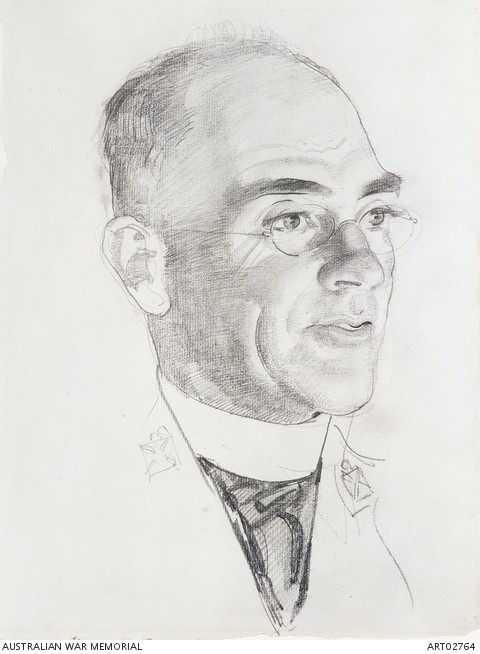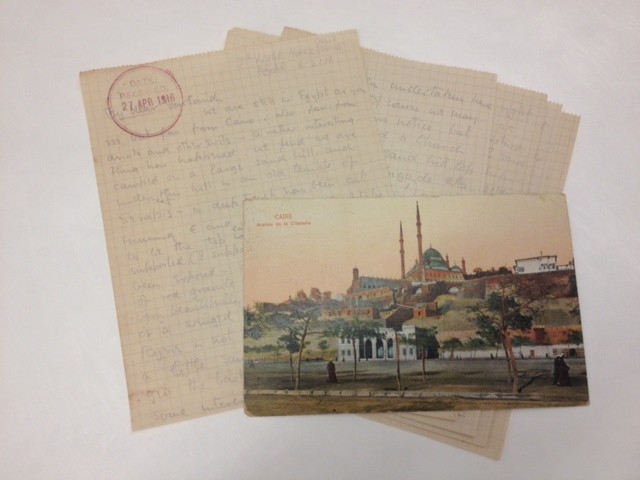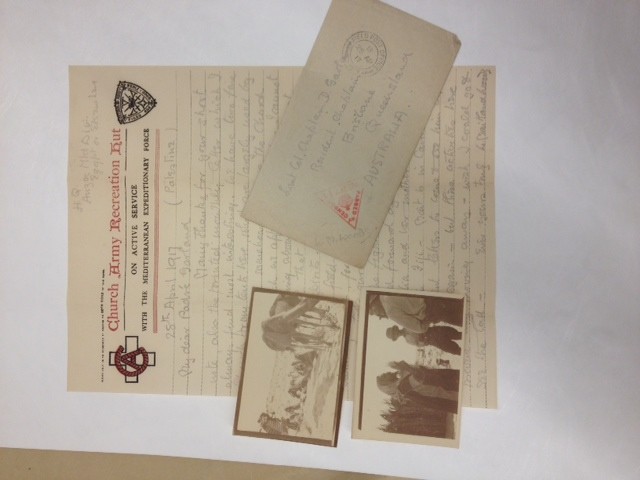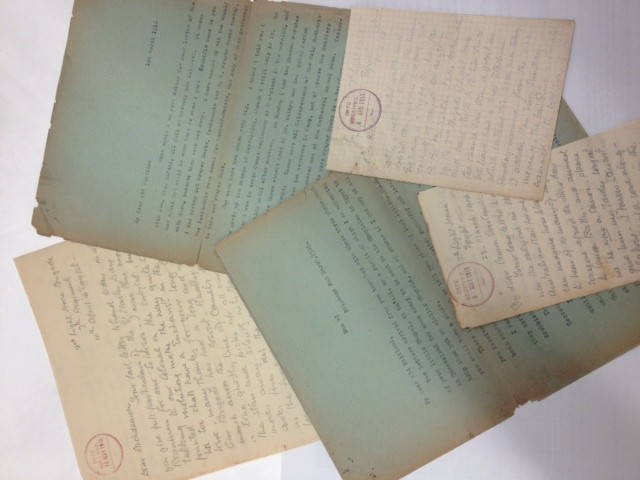The Reverend William Maitland Woods - Army Chaplain A.I.F.
By Robyn Hamilton - QANZAC100 Content Curator, State Library of Queensland | 8 May 2014
The Reverend William Maitland Woods (1864-1927) was an Anglican clergyman and a military chaplain. As the first rector of Thursday Island he oversaw the building of the Quetta Memorial Church, and also worked in parishes in Townsville, Cairns, Dalby, Brisbane, and Ariah Park in New South Wales. He was rector of St Mary's Anglican Church, Kangaroo Point from 1903-1919.

Lambert, George. Reverend William Maitland Woods, 1918. Australian War Memorial, ID No: ART02764
While he served as a Chaplain in the Queensland Land Forces in 1893, Woods is largely remembered for his service during World War 1. He transferred to the Australian Imperial Force in August 1915 and served at Gallipoli with the 2nd Brigade, then the 7th Light Horse Regiment. After evacuation to Egypt, Woods was appointed to the staff of Major General Chauvel's Anzac Mounted Division in July 1916, as Senior Chaplain. Despite his advancing age, he spent long months camped in the desert with the troops, as the campaign in defence of the Suez Canal unfolded, and the Sinai Peninsular and Palestine were retaken.

Letter and postcard from Egypt, February 1916
State Library holds the Maitland Woods Papers, which contain around 65 letters between The Reverend Woods at the Front, and Canon David John Garland (1864-1939) in Brisbane. Both Padres were remembered with affection by the men to whom they ministered - compassionate and energetic and sure of their purpose. The Reverend Woods' letters were written from various locations - Gallipoli, Lemnos, Cairo, Ma'adi, Port Said, and other Light Horse camp sites in Egypt, Palestine and on the Sinai Peninsula around the Suez Canal. In the letters he described daily life and conditions in the trenches, the dust, heat and illness, and often expressed admiration for the immense bravery, physical strength and unflappably positive attitude of the Australian soldiers in his care. Many of his letters remarked on his everyday duties as Chaplain, as he held services, ministered to the men and performed the unhappy task of burying the fallen. He also described the harshness and the beauty of the desert landscape, and the quiet progress of the long columns of troops as they wound through the sand seeking water or encampment.

Letter from Palestine with photographs, April 1917
Several of the letters from 1915 and 1916 discussed a flag from Gallipoli - the first Australian flag hoisted on the Gallipoli Peninsula after the landing, carried and hoisted by Queenslanders, and given to Woods with the wish that it 'be sent to His Grace the Archbishop of Brisbane to be hung in the Cathedral Church of St John'. Woods posted the flag to Garland for safekeeping.
Garland's letters also detailed his everyday duties as Archdeacon and later Canon in the Anglican Church. Also a Senior Army Chaplain, Garland worked tirelessly in the training camps in and around Brisbane and further afield, and detailed his involvement in the Anzac Day Commemoration Committee, and the establishment of Anzac Day in Queensland. He was fully in favour of Conscription, and was honorary secretary of the Queensland Recruiting Committee, on the Executive of the National Council for the Referendum and founder of the Universal Service League, the efforts of which he reported to Woods with varying degrees of optimism or despondency, depending on how the Conscription debate was leaning. Both men exchanged news of their families, in particular their sons, who were on active service. 'Young Mait' served much of the War alongside his father.

Letters from Garland and Woods
As an enthusiastic amateur archaeologist, Woods also wrote to Garland about objects which he and the men found - coins, relics, and most significantly, the Shellal Mosaic. Discovered by troops on 17 April 1917 during the second battle of Gaza, this Mosaic was eventually shipped to Australia bound for the Australian War Memorial, and Woods was charged with overseeing its excavation and transportation. In one letter, dated 27 June 1917, he described the 'fearful heat' of the excavation, and the 'trials and difficulties of getting it so far from Palestine' including negotiation with the Cairo Museum authorities. In other letters he commented on the various ruins and archaeological sites he saw in his travels. In keeping with his religious and historical interests, he often gave informal lectures to the troops about different aspects of the Holy Land, and reported the success of these small ventures to Garland. Because censorship often prevented Woods from revealing his precise location in his letters, he sometimes alluded to his whereabouts by drawing on his knowledge of antiquity, or using biblical references.
The wartime letters cease in August 1917, with Garland's news that he would be joining Woods in the Middle East, having been appointed 'representative' of the Church of England in Australia to inquire into the 'moral and social' needs of the men in Egypt. With a large sum of money at his disposal, Garland had been placed in charge of the 'Church of England Fund for Soldiers at the Front'. Garland served in the Middle East from 1918-19, founded eight clubs for Australian troops, and was the first Chaplain to perform a Eucharist in the Anglican chapel of the Church of the Holy Sepulchre after the Turks were expelled from Jerusalem. Upon his return to Queensland in 1920, Garland became rector of Ithaca and continued a diverse and illustrious career of community involvement, including presidency of the New Settlers' League from 1926. In 1919 Woods was appointed O.B.E. and returned to Australia. He immediately sailed to join his wife in Fiji where she had nursed during the War, then onto Hawaii, where Woods became the Headmaster of Iolani College for a year then rector of St Clement's Episcopal Church from 1923. The last letter in the collection is from Woods to Garland, dated 19 May 1926. Woods died in February 1927 in Honolulu, survived by his wife, son and daughter.
In the coming months State Library will be digitising these wonderful letters to make them available to all.
Robyn Hamilton - QANZAC100 Content Curator, State Library of Queensland
Comments
Your email address will not be published.
We welcome relevant, respectful comments.